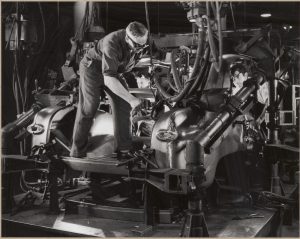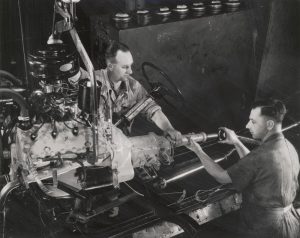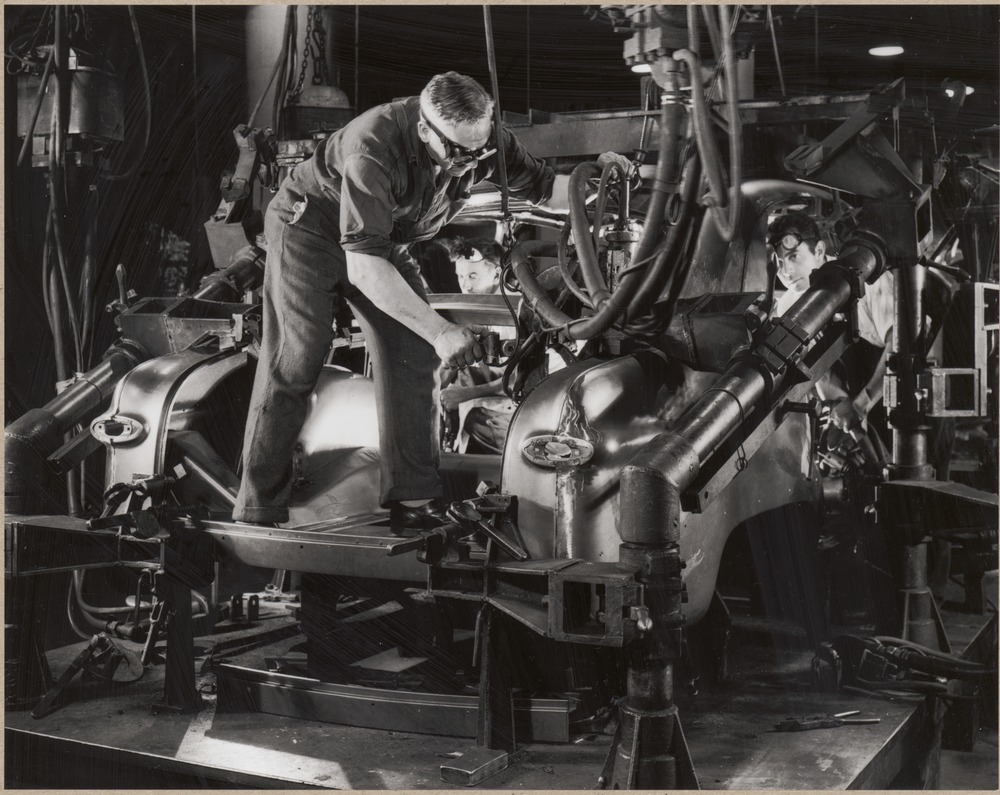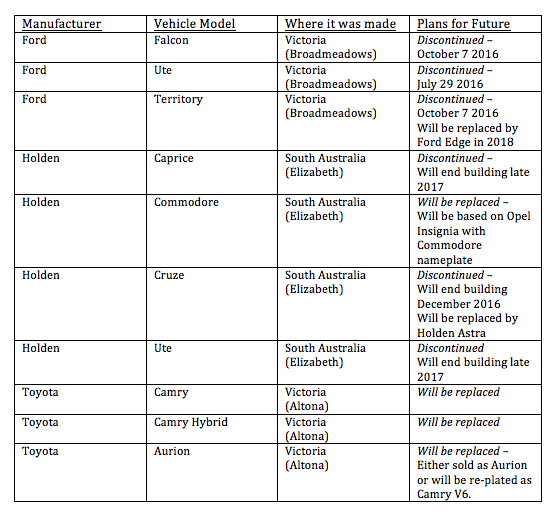With the Ford manufacturing plant in Altona, Victoria, closing down in October, and the fast-approaching closures of the Holden and Toyota manufacturing plants in 2017, the Australian automotive industry is entering a new era. With Australian vehicle manufacturing set to end, and Australia relying on imported vehicles, how will this transition affect Australian consumers?
The answer is: for the most part, it won’t. Australia is already heavily reliant on vehicle imports, despite local manufacturing plants. The majority of vehicle models made by Toyota, Ford and Holden are already imported, with only a select few models still made in Australia.
This means that these companies already have the infrastructure and required knowledge for large-scale importation of vehicles, and ensures that there should be no significant delays or disruptions experienced by consumers.
The most notable of these differences brought about by the end of manufacturing in Australia will be related to some of Australia’s most well-known brands and famous names in Australia’s vehicle industry.
Australian household names including the Ford Falcon, the Ford Territory, and the Australian cultural icon, the Holden/Ford Ute, will not continue to be manufactured once the company’s Australian manufacturing plants have closed down.
This means that for Ford, the end of Australian manufacturing spells the end of one of the most recognisable names in the Australian vehicle market, the Falcon.

Source: National Gallery of Victoria https://www.slv.vic.gov.au/
Photographer: Wolfgang Sievers
The last Ford Falcon to ever be manufactured rolled off the production line on October 7th 2016, and sees the end to the Ford Falcon era in Australia. This was after the final Ford Falcon Ute was built on July 28th 2016, 55 years after the original Ford Falcon Ute was built in the same Broadmeadows factory in February 1961.
Ford have announced the very last Ford Falcon to ever be produced, a blue XR6 sedan, will be kept by the company as a museum piece, alongside the last Ford Territory and the last Ford Falcon Ute.
Ford also raffled off eight identical blue XR6 sedans, the previous eight final vehicles ever built at the facility, to be won by the 600 workers who have lost their job with the closure of the manufacturing plant.

Source: National Gallery of Victoria https://www.slv.vic.gov.au/
Photographer: Wolfgang Sievers
Unlike the Falcon, the end of Australian manufacturing for Holden does not spell the end for the famous Commodore nameplate. Holden have confirmed plans to continue the Commodore nameplate on an imported vehicle based on the Opel Insignia after 2017.
Holden has announced the discontinuation of the Holden Cruze (to be replaced by the imported Holden Astra) in December of this year, which will include the early loss of about 400 jobs from Holden’s manufacturing plant in Elizabeth, South Australia. However the plant will continue to manufacture all types of Commodore wagons, sedans and utes until the factory’s final day of operation in the second half of 2017.
As stated by David McCowen from Drive.com.au, “Holden is set to let customers shape the end of local car manufacturing by building the cars people want to buy.”
“Unlike Ford, which shut down ute production months ahead of the Falcon’s demise, Holden plans to offer a full range of Commodore-based cars before closing its factories in the fourth quarter of 2017.”
Toyota, currently the largest car manufacturer in Australia, will be the last to manufacturer to leave Australian shores. They have confirmed their Australian vehicle manufacturing will cease at the end of 2017, and with it will end large-scale vehicle manufacturing in Australia.
But for Australian Toyota consumers, the transition from locally manufactured to fully-imported should go mostly unnoticed. Toyota have already committed to replacing the Camry and Camry Hybrid with fully-imported models post-2017, and while Toyota have confirmed they will continue with a fully-imported version of the Toyota Aurion, Toyota are yet to confirm if they will continue the Aurion nameplate, or return to the Aurion’s original name, the Camry V6.
While there will be some significant absences in the future new vehicle market, for the most part these companies are not radically changing their presence in Australia apart from manufacturing.
Outside of the significant job losses in manufacturing, which is by far the largest impact of this transition, there are some concerns being raised by Australian consumers about the future of the Australian vehicle landscape.
The largest concern for Australian consumers is the announcement by both Holden and Ford that the closure of their manufacturing plants in Australia signals the end to their production of V8 sedans.
Both manufacturers have announced plans to replace their V8 models with twin-turbo V6 sedans in future imported vehicles, despite the V8 sedan still being one of the best sellers for both brands.
There are also concerns over availability of certain vehicles in the transition from locally manufactured to fully imported vehicles.
The most notable disruption will occur to Ford’s SUV market, with the Ford Territory ending production on October 7th 2016, and Ford announcing they will not introduce a new SUV into Australia until the 2018 release of the globally-branded Ford Edge.
Ford are expected to have roughly six months worth of Territory stock left, but then will be absent from the extremely popular large SUV market until they release the Ford Edge, either under that name or rebranded as the Ford Territory due to name recognition in Australia.
So while there will be some differences, and a few notable absences, in the future Australian vehicle market, the end of Australian manufacturing will not significantly impact Australian vehicle consumers.
While there will be a transition period for Australian consumers to become accustomed to the new model names, and the new looks of old favourites, these manufacturers have purposefully tried to ensure the transition is as simple as possible.



